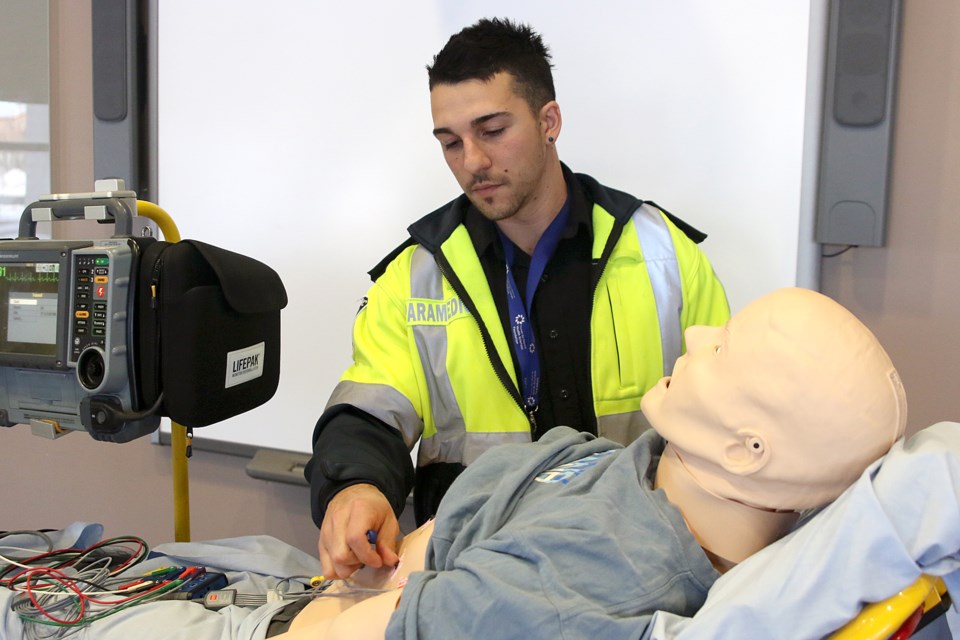THUNDER BAY – When it comes to surviving a heart attack, seconds count.
To combat the danger, Superior North EMS paramedics and staff at the Thunder Bay Regional Health Sciences Centre’s cardiac catheterization lab have taken an important step to help fast-track patients facing a possible life-and-death situation, cutting as much as 15 minutes off the time it takes to be seen by a cardiac specialist.
En route to the hospital, paramedics will be able to transmit data from a 12-lead electrocardiogram to the cardiology team, the results of which could spring them into action if the test’s ST elevation indicates a heart attack might be occurring.
This could be the difference between living or dying, said Terri Gurney, manager of the hospital’s cardiac catheterization lab.
“From the ambulance, we’re going to have this picture relayed to our cardiologist on call. That cardiologist on call is going to review that picture of the 12-lead ECG. He’s going to talk to the paramedics … and this is all while you’re en route to the hospital,” Gurney said on Wednesday.
“At that point, if they determine that yes, you’re having a heart attack, our cardiologist will activate the team, and by the time you get to the hospital we should have that team en route.”
Until now, it’s been largely a guessing game. Paramedics took about 18 months to complete the training.
Superior North EMS Deputy Chief Andrew Dillon said it takes time to be properly able to put the 12 leads on a patient and then interpret the data produced through the test.
The change isn’t as much how patients are treated when paramedics arrive, but how they’re treated moving forward.
“Previously our medics would go in, assess, treat and would still perform this 12-lead (test). They would do their interpretation and would patch through to the hospital, providing that information to the emergency department,” Dillon said.
“The problem was there was a lag time at the emerg department in terms of getting the cardiac cath lab prepared or the information to the cath lab … We needed to figure out a way to get that data transmitted to the cardiologist quicker.”
Gurney estimated 900 patients each year get stents to open coronary arteries. About 150 patients need to get to the lab immediately. She cautioned anyone who suspect they might be having a heart attack to ensure they call paramedics first, and not try to get to the hospital on their own.
“Everything’s just going to happen so much faster for you,” Gurney said.
